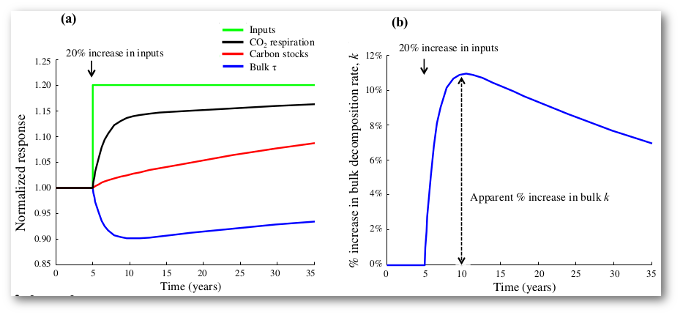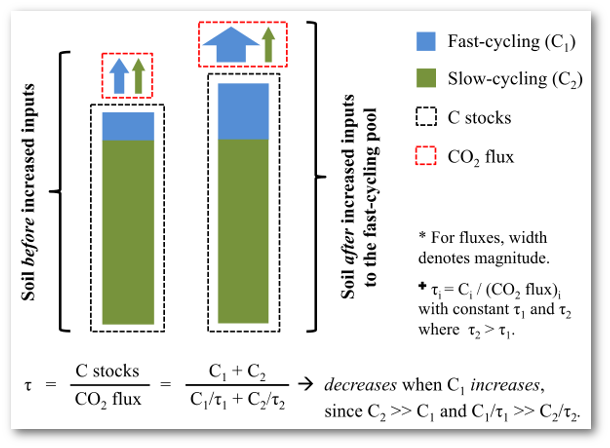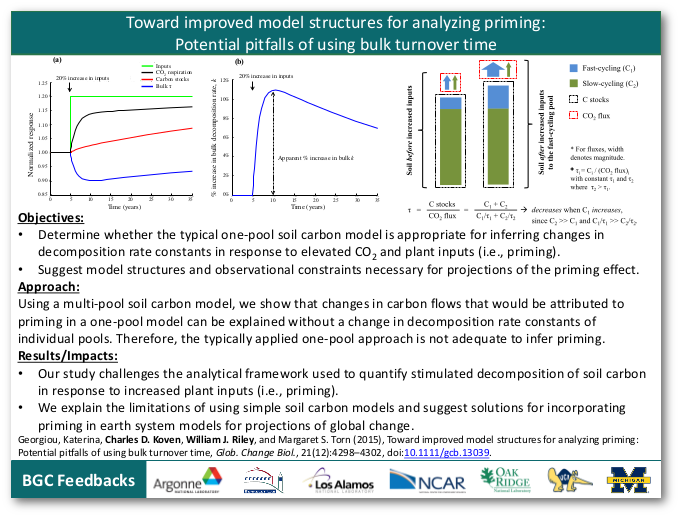Research Highlights
Toward improved model structures for analyzing priming: Potential pitfalls of using bulk turnover time
December 1, 2015
Rising atmospheric CO2 concentrations are projected to increase plant inputs to soil, which may stimulate soil carbon decomposition. Many studies attempting to quantify this priming effect use a simple analytical framework that is inappropriate for inferring complex dynamics. Using a multi-pool soil carbon model, we show that changes in carbon flows that would be attributed to priming in a one-pool model (using overall respiration and carbon stocks) can be explained without a change in decomposition rate constants of individual pools. Furthermore, we perform a sensitivity analysis to show the potential range of ‘false priming’ responses inferred from simple, first-order models. We argue that, in addition to standard measurements of carbon stocks and CO2 fluxes, quantifying the fate of new plant inputs requires isotopic tracers and microbial measurements. We discuss the pitfalls of using simple model structures to infer complex dynamics, and suggest appropriate model structures and necessary observational constraints for projections of carbon feedbacks.
Objective
- Determine whether the typical one-pool soil carbon model is appropriate for inferring changes in decomposition rate constants in response to elevated CO2 and plant inputs (i.e., priming).
- Suggest model structures and observational constraints necessary for projections of the priming effect.
Approach
Using a multi-pool soil carbon model, we show that changes in carbon flows that would be attributed to priming in a one-pool model can be explained without a change in decomposition rate constants of individual pools. Therefore, the typically applied one-pool approach is not adequate to infer priming.
 |
Results/Impacts
- Our study challenges the analytical framework used to quantify simulated decomposition of soil carbon in response to increased plant inputs (i.e., priming).
- We explain the limitations of using simple soil carbon models and suggest solutions for incorporating priming in earth system models for projections of global change.
 |
Georgiou, Katerina, Charles D. Koven, William J. Riley, and Margaret S. Torn. December 1, 2015. “Toward Improved Model Structures for Analyzing Priming: Potential Pitfalls of Using Bulk Turnover Time.” Glob. Change Biol., 21(12):4298–4302. doi:10.1111/gcb.13039.
